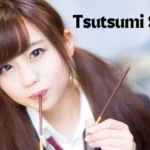Introduction to the Sankaka Complex
The Sankaka Complex is more than just a cultural phenomenon; it embodies the spirit of an entire community. With its rich tapestry of history, art, and tradition, this complex serves as a vibrant reminder of what it means to belong. Whether you’re discovering it for the first time or revisiting its significance, there’s much to explore within the layers of meaning behind the Sankaka Complex. From mesmerizing dances to intricate music and stunning costumes, every element tells a story that resonates across generations. Join us on this deep dive into one of culture’s most fascinating aspects—where past meets present in an ever-evolving celebration!
Historical Background and Origins of the Sankaka Complex
The Sankaka Complex has roots that trace back centuries, deeply embedded in the cultural tapestry of its region. Its origins lie in ancient rituals, where communities gathered to celebrate life and express their shared beliefs.
Historical documents suggest that the complex evolved through various phases, influenced by neighboring cultures and traditions. These interactions enriched its practices, making it a vibrant fusion of influences.
Folklore plays a crucial role in understanding how the Sankaka Complex developed. Stories passed down through generations highlight significant events and figures integral to its narrative.
Moreover, archaeological findings reveal artifacts linked to early manifestations of the complex. These discoveries provide insight into how past societies utilized dance, music, and art for spiritual expression.
As time progressed, societal changes prompted adaptations within the Sankaka Complex. Each era left an indelible mark on its evolution while maintaining core elements that resonate today.
The Cultural Significance of the Sankaka Complex
The Sankaka Complex holds a profound place in the cultural landscape of its region. It serves as a vibrant expression of community identity and heritage. This complex is not merely an artistic form; it embodies stories, traditions, and values that have been passed down through generations.
At its core, the Sankaka Complex fosters unity among people. Participants engage not only to showcase their skills but also to connect with one another on deeper levels. The rituals associated with this complex often mark significant life events—births, marriages, and festivals—that strengthen communal bonds.
Moreover, it acts as a platform for social commentary. Through dance and music, artists address contemporary issues while preserving age-old narratives. This dynamic interplay keeps the spirit of the Sankaka Complex alive and relevant in today’s society. Its influence extends beyond art; it’s woven into daily lives and local customs, making it an essential thread in the cultural fabric.
Elements of the Sankaka Complex: Dance, Music, and Costumes
The Sankaka Complex thrives on a vibrant tapestry of artistic expression. Dance is at its heart, characterized by intricate movements that tell stories and convey emotions. Each step is deliberate, reflecting the cultural heritage it represents.
Music complements the dance with rhythmic beats and melodic tunes. Traditional instruments resonate through performances, creating an atmosphere rich in history. The harmony between sound and movement captivates audiences.
Costumes are another vital element of the Sankakar Complex. Bright colors and elaborate designs not only enhance visual appeal but also signify deeper meanings tied to identity and tradition. Fabrics flow gracefully during dances, adding layers to each performance.
Together, these elements form a cohesive experience that transports viewers into the world of the Sankakar Complex. They embody a legacy passed down through generations, celebrating both art and community spirit.
Modern Interpretations and Adaptations of the Sankaka Complex
The Sankaka Complex has evolved significantly over the years. Today, artists and performers embrace this rich tradition while infusing contemporary elements into their work.
Modern dance troupes often reinterpret traditional choreography. They blend classical movements with urban styles, creating a fresh aesthetic that resonates with younger audiences. This fusion opens new avenues for expression.
Musicians are also reimagining the soundscapes of the Sankaka Complex. Traditional instruments find their place alongside electronic beats, producing a captivating auditory experience that bridges generations.
Costuming has taken on new dimensions as well. Designers experiment with fabric and design, merging ancient motifs with modern fashion trends. The result is visually stunning attire that pays homage to its roots while appealing to today’s tastes.
These adaptations showcase how cultural heritage can thrive in contemporary settings, ensuring the Sankaka Complex remains vibrant and relevant in our ever-changing world.
Misconceptions and Controversies Surrounding the Sankaka Complex
The Sankaka Complex is often surrounded by misunderstandings that can overshadow its true meaning. Many people assume it’s solely an ancient tradition, neglecting its evolving nature in modern contexts.
Some critics argue that the complex is merely a relic of the past, failing to recognize how it has adapted over time. This dynamic aspect is crucial for survival and relevance within contemporary society.
Another misconception lies in cultural appropriation debates. Some believe that outside influences dilute the authenticity of the Sankaka Complex. However, this interaction can also lead to enrichment and new interpretations.
Controversies frequently arise regarding representation. Not everyone feels adequately portrayed or included in discussions about the Sankaka Complex, leading to tensions among various groups striving for recognition within their culture’s narrative.
These misconceptions highlight a need for deeper understanding rather than surface-level judgments based on outdated perceptions or incomplete knowledge.
Conclusion: Why the Sankaka Complex is an Important Part of Culture
The Sankaka Complex holds a vital place in the tapestry of cultural heritage. Its roots stretch deep into history, intertwining with traditions that have shaped communities for generations. By celebrating this complex, we acknowledge not only its artistic expressions through dance and music but also its role in fostering identity and connection within societies.
As modern interpretations continue to evolve, the Sankaka Complex serves as a bridge between past and present. It invites new audiences to engage with its rich stories while encouraging respect for its origins. The conversations surrounding misconceptions and controversies further highlight the importance of dialogue in preserving cultural integrity.
Recognizing the significance of the Sankaka Complex enriches our understanding of diverse cultures. It reminds us that these traditions are more than just performances; they are living narratives that reflect values, beliefs, and shared experiences. Embracing such complexities contributes to a broader appreciation for global heritage, ultimately weaving together an even richer cultural narrative for future generations to explore.






